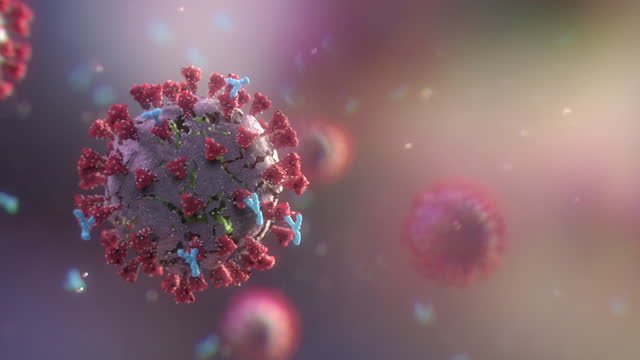
Experts recently discovered that SARS-CoV-2 or the coronavirus that causes Covid-19 can survive and spread from cell to cell in people who have been infected. According to the study, which was published Wednesday (12/22/2021) in the journal Proceedings of the National Academy of Sciences, the virus has adopted several 'stealth' movements to stay alive. In addition, the researchers also announced that one of the secrets of the corona virus successfully 'hiding' from the immune system is by spreading through cell-to-cell transmission. Based on cell culture experiments, the researchers found that the SARS-CoV-2 virus that causes Covid-19, limits the release of viral particles that can be inactivated by antibodies. However, the particles remain embedded in the cell wall and then spread between cells. "It's basically a form of underground transmission," said Shan-Lu Liu, professor of virology in the Department of Veterinary Biosciences at Ohio State University. As the lead author of the study, Liu explained in this research, SARS-CoV-2 spreads from cell to cell because there are basically no inhibitors from the human immune system. The target cell becomes a donor cell, and only becomes a spreading wave because the virus cannot get out of the cell. Liu and his team also revealed that the viral spike protein on the surface alone allows it to spread from cell to cell. However, the primary viral receptor on the target cell is not a necessary part of the cell-to-cell transmission process. In addition, they found that the antibodies the body makes are less effective against viruses that have spread through cells.
Furthermore, researchers have also compared the SARS-CoV-2 virus with the coronavirus behind the 2003 SARS outbreak called SARS-CoV. Through these findings, Liu was able to provide a tentative explanation for why the 2003 SARS outbreak could have caused a much higher death rate even though it only lasted eight months. Meanwhile, the Covid-19 pandemic which has lasted for two years, most cases are asymptomatic. The comparison shows that SARS-CoV that caused SARS in 2003 was more easily neutralized with antibodies than SARS-CoV-2 in the cell transmission process. Simply put, free-floating SARS virus particles infect target cells by binding to receptors on their surface freely, but this makes the virus susceptible to both vaccine-produced antibodies and antibodies from previous infections. Meanwhile, SARS-CoV-2 spreads from cell to cell making it more difficult to be neutralized by the antibodies produced. "Spike proteins are necessary and sufficient for cell-to-cell transmission of SARS-CoV-2 and SARS-CoV because the only difference in these pseudoviruses is the spike protein," Liu said. On the other hand, researchers also conducted experiments that tested blood samples from Covid-19 patients against the original SARS-CoV-2 virus, and showed that the virus can evade antibody responses through cell-to-cell transmission. Then, neutralization of viral antibodies in the cell-free mode of transmission was assessed as effective. "We can confirm that cell-to-cell transmission is not sensitive to antibody inhibition from Covid patients or vaccinated people," Liu said. He added that the resistance of cell-to-cell transmission to neutralization of antibodies must be watched out for because SARS-CoV-2 variants continue to emerge, including the Omicron variant. "There's still a lot that's unknown about the finding that the coronavirus spreads from cell to cell, what mechanisms are used, how this might affect an individual's response to viral infection, and whether efficient cell-to-cell transmission contributes to the emergence or spread of new viruses," he said.